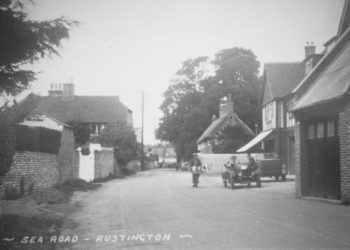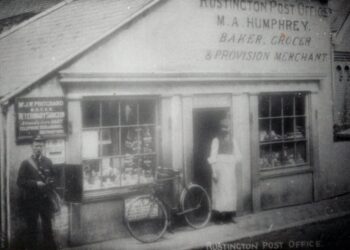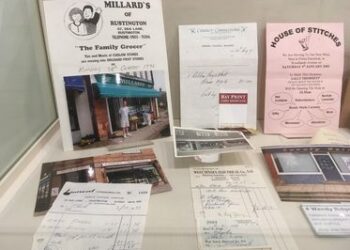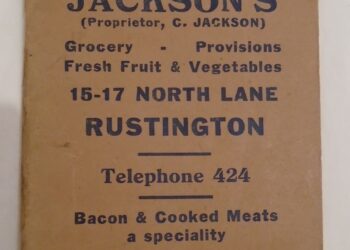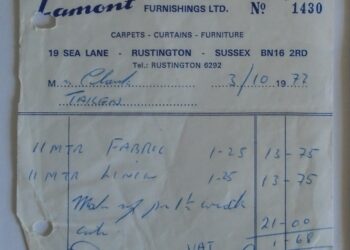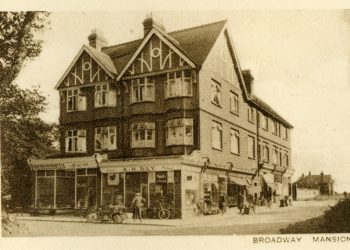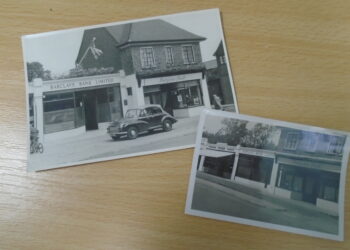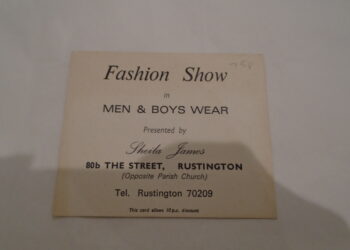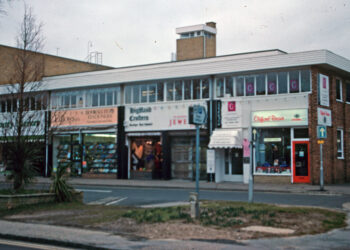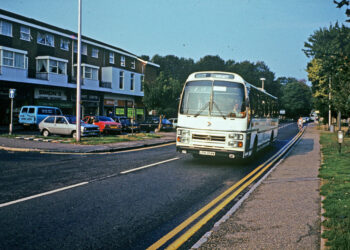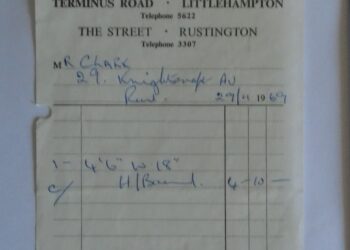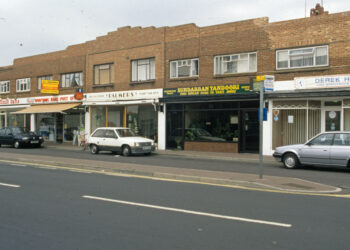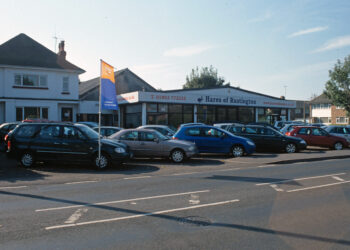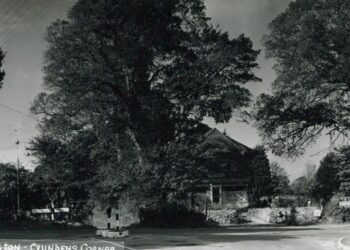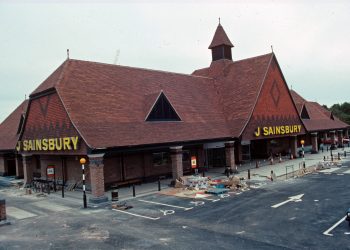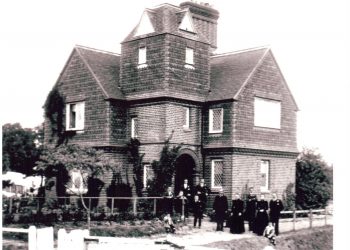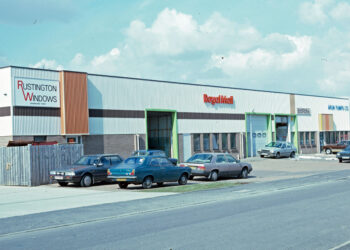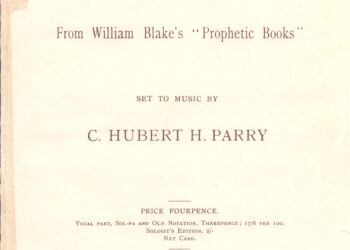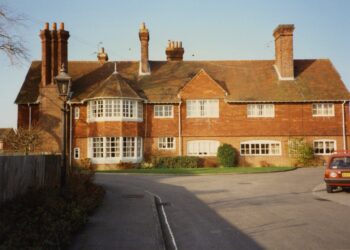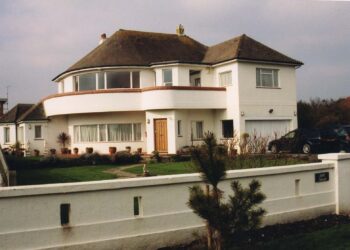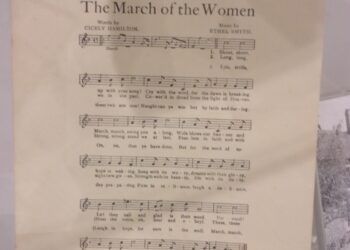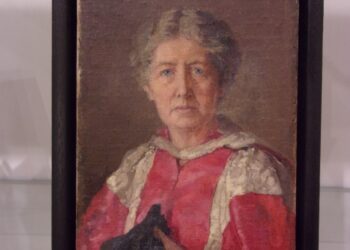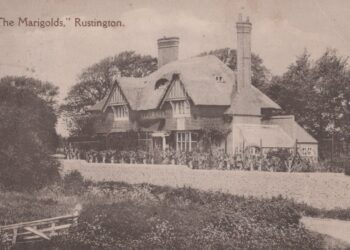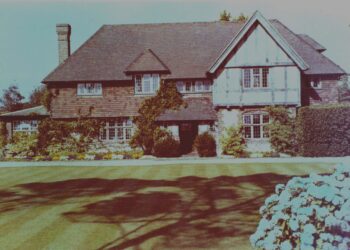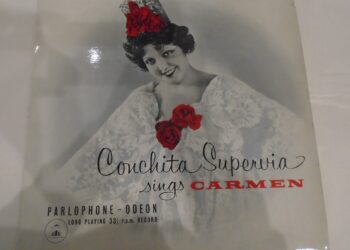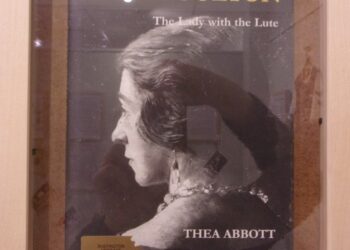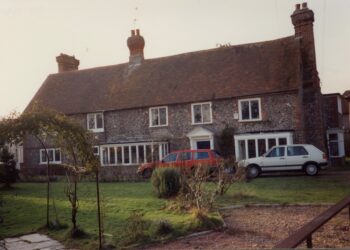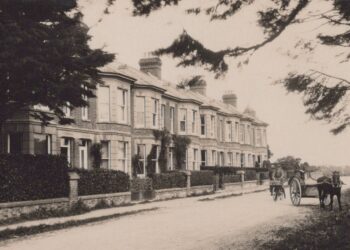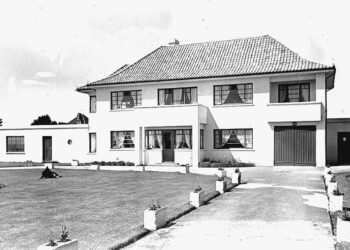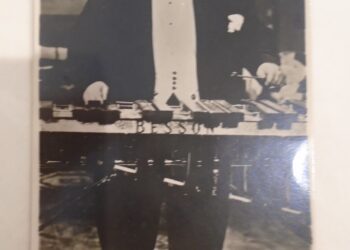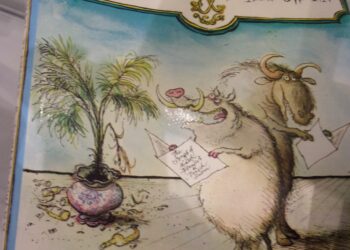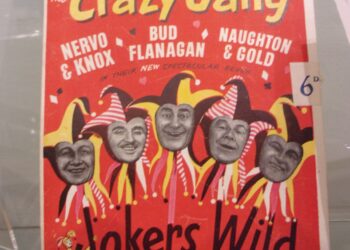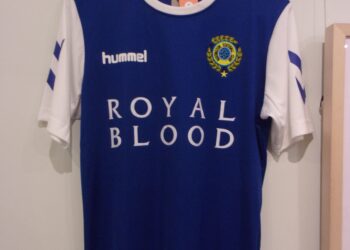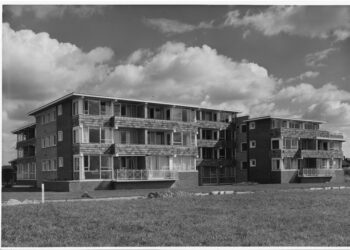
EXHIBITIONS
Welcome to our online exhibitions page where you can explore past exhibitions. Text from the panels, images from displays and views of the cases can be found here.
The InfoAktiv screen in the Museum also has past exhibitions, so if you have missed one, there is another chance to see it.
The exhibition on display here is all about the shops in Rustington, from the very first ones in Sea Lane to the shops we know today like Waterstones.
The Museum is still collecting any old shops items and is keen to keep up to date with the database of “what was where when”.
SHOPS IN RUSTINGTON
Explore shops past and present
Sea Lane and North Lane
The first shop in the Village was opened in Sea Lane circa 1846, just round the corner from The Lamb Inn. The first Post Office was also opened there in 1870.
Sea Lane
In 1931 Cudlow Parade was built on the site of Cudlow Farm opposite Hobbs Farm.
Later in 1938, a second Parade of shops was built on land that was part of the Grange Estate once owned by the Urlin family and named Grangeway. A northern range was built in the 1960s on what was waste ground from the same estate.
North Lane
The first shop on North Lane was built in the 1920s at the junction with Wendy Ridge (once known as Windy Ridge) and was run by the Watts family as a general store. It is now Ashdown Lodge Care Home.
Wendy Parade established itself along North Lane in the late 1930s. Easton’s Drapers, Selby’s Wines and Rowes Cycles have been among the shops on the Parade over the years.
Click on the images below to see them full size.
Ash Lane and Broadmark Avenue
The late Victorian and Edwardian periods saw the start of Rustington’s expansion. New shops started to appear, catering to the growing population. The types of shops also started to vary.
Ash Lane
Ash Lane was the location of the Village’s first sweet shop run by Mrs Berry, who sold homemade treats. The last occupant was Majorie Peall who had a hairdressers there in the 1960s. The building no longer exists, having been demolished in 1977. Boots the Chemist took over the new purpose-built shop in March 1978, currently the home of All Seasons.
Broadmark Parade
This Parade of shops was purpose-built in 1936, with several large houses, such as “Matthews”, demolished to make way. The last to go was Broadmark Cottage and its small holding in 1970. Key Markets (now Waitrose) was built on the land. “Matthews” also hosted Westminster Bank, the Village’s first bank, for several hours a week.
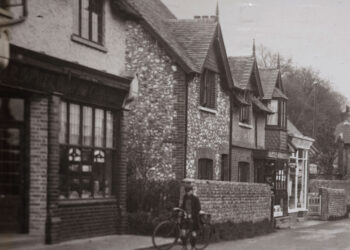
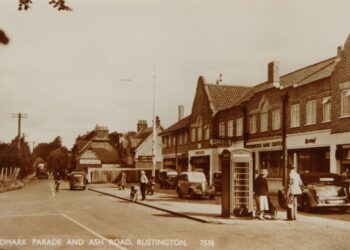
The Street
Dedicated shopping areas first started appearing in The Street with Broadway Mansions and Church Parade.
Broadway Mansions
Broadway Mansions was the first purpose-built shopping complex in Rustington. Built in 1909 by Summers, one the Village’s early developers, it had shops on the ground floor and flats above. Many of the big names in Rustington started here, such as R&I Stacey. The complex was demolished in 1972 and replaced with a modern block housing a supermarket and flats. Foodrite was the first shop, opening in 1973.
Church Parade
Also known as Drake’s Shops (after their builder), Church Parade was built in 1936 when the Village expanded and with it the need for more shops increased. Other notable shops in the area were Vincent’s on Church Road corner, which opened before 1914. Victoria Farm Dairy stood opposite where Leaders is based today.
The Street
The biggest change to shopping in Rustington has been the development of The Street in the late 1950s and 1960s.
Developments by Store Property
The first Parade of shops (where NatWest Bank is now) was built in 1956, but the original plans were for a cinema. The southern range (from Clarkes to Isla Living) followed in 1960 on an old paddock.
Four large houses once stood along The Street but were demolished in 1963 to make way for Churchill Parade. Church Farm Gardens Estate and the car park cover the old gardens. Churchill Court, behind the Parades, was built on the site of the builders yard for the development.
The parking in front of the shops was insisted upon by West Sussex County Council, and was forward thinking for its time.
Sterling Parade
Before the Parade was built, Quix Petrol Station stood on the site next to Broadway Mansions. Sterling Parade was built between 1963 and 1967.
Worthing Road and Station Road
The need for shops outside of the Village centre, led to new shopping Parades being built at Worthing Road and Station Road.
Worthing Road
Beulah Bakery and Kenny’s Cash Stores were in Wallace Road during the 1920s, the latter at the junction with Worthing Road. Tunnicliffe Butchers and Ayling Greengrocers were in Worthing Road circa 1928, opposite Wallace Road. The shops still stand, though the businesses are different now.
A Parade of shops was built at the east end of Worthing Road in the 1930s, with a second Parade to their right in the 1960s.
Station Road
The Village soon expanded eastwards, meeting up with East Preston. Station Parade was built in 1962 to provide shops in the area.
The Corner Café was run from as early as 1938 in the building that now houses New So India. Another business of note was the Station Road Service Station founded by Fred Gates in the 1920s. It became Hares in 1955 and is now the recently built apartments on the corner of Elm Place.
Click on the images below to see them full size.
Trading Estates
As Rustington grew, the space for shops became increasingly scarce. Trading Estates were built on former nurseries and brickworks, or out of town.
Rustington and Brookside Trading Estates
Situated off Worthing Road, there are two trading estates. Rustington Trading Estate was built in the 1970s by Store Property on the land that was part of the Worthing Road Brickworks and The Anchorage, the home of brickworks manger Mr Shepherd.
Brookside Trading Estate took its name from the nursery that stood on the site from the 1940s until the 1960s.
Rustington and Manor Retail Parks
In the 1980s, Store Property built the shops where Pets at Home to Dunelm stand now, on the site of Barn’s Nursery, whilst Sainsbury’s was built on the site of the Darlington Mushroom Laboratories. Archaeology digs done before the building works uncovered pre-historic and Roman artefacts, some of which are in the Museum’s collection. Further west, Store Property also developed Manor Retail Park where Chandlers BMW to Aldi are now. Chandlers’ old showroom in the Village became Establo Lounge.
Click on the images below to see them full size.
MUSICAL RUSTINGTON
From Composers to Concerts…
Classical Composers
Sir Hubert Parry (27 Feb 1848 – 7 Oct 1918)
Parry was interested in music from a young age, but was not encouraged to make it a career. He gave music lessons and studied composition whilst he worked in insurance.
His reputation as a Composer grew, and he gave up his day job to concentrate on a musical career. The family moved to Rustington in 1879, first staying at Cudlow House, before building “Knightscroft House” nearby. Parry so loved the Village he named a tune after it and often referred to it as “Dear Little Rusty” in his diaries.
Parry died at his home in “Knightscroft House” and was interred at St Paul’s Cathedral on 16 October 1918.
George Posford (23 Mar 1906 – 24 Apr 1976)
Born in Kent as Benjamin George Ashwell, he became a professional Composer in 1930 and changed his name to Posford. He first specialised in radio work before moving into theatre.
Posford built a home for himself in Sea Avenue. At the time, it was called “Sea Horses”, and is now known as “Sark House”. It is typical of the 1930s Art Deco style and the shape is said to resemble a piano. Many celebrities were party guests, including Noel Coward.
Click on the images below to see them full size.
Female Classical Composers
Dame Ethel Smyth (22 Apr 1858 – 8 May 1944)
A strong supporter of Women’s Suffrage, Dame Smyth was born in Kent and started her musical studies aged 17. She made a name for herself as a Composer and, in recognition of her work, was made a Dame in 1922.
Dame Smyth was good friends with Rhoda and Agnes Garrett, living with them at “The Firs”. She was introduced to Parry in 1881, and in her diaries she records he lent her a canoe which she used regularly on her visits. He gave her musical critique and advice.
She dedicated a pieces of music to Rhoda upon her death, “String Quintet in E Major” (1883), which was later arranged as a piano duet.
Dr Emily Rosa Daymond (11 July 1866 – 10 October 1949)
Dr Daymond studied music at the Royal College of Music under Sir Hubert Parry, soon becoming a devoted disciple.
She stayed with Parry at Rustington on many occasions as his assistant, and they went on many bicycle rides together in the local area, sometimes to deliver Suffragist material. She completed and complied several of his musical works after his death.
Dr Daymond was the first woman to be granted a Doctorate of Music from Oxford and became the first Director of Music at the Royal Holloway College for Women.
Mary C D Hamilton (24 May 1850 – 10 June 1943)
Mary lived at “Marigolds”, a hotel at the corner of Holmes Lane and Sea Lane. She is best known for writing “A Hymn to Aviators” which was set to music by Sir Hubert Parry. It was played at Prince Philip’s funeral.
She was a supporter of women’s suffrage and friends with Rhoda and Agnes Garrett, holding fundraisers at the hotel grounds.
Click on the images below to see them full size.
Classical Performers
Dame Nellie Melba (19 May 1861 – 23 Feb 1931)
After finishing school, a young Nellie from Australia decided she wanted a career in music. She later married Charles Armstrong in 1882 in Australia. In recognition of her fund-raising during World War 1 she was created a Dame in March 1918.
Charles’ mother. Lady Frances Armstrong, lived in Rustington, and Dame Melba came to visit her at “Seafield House” on Sea Road. Charles’ sister, Frances, was married at the Parish Church of St Peter and St Paul. Dame Nellie’s son, George, was christened at the same Church and she was known to perform there on occasion.
Conchita Supervia (8 Dec 1895 – 30 Mar 1936)
Conchita was born in Barcelona and rose to fame as an Opera Singer, and could sing in several languages. In 1931, she married Ben Rubenstein, a Nursery Gardener who had business in Rustington.
They lived together at “Timbers”, which was part of the Sussex Nurseries estate. He would send flowers grown in the Nursery for her after every performance. She was expecting her second child in March 1936, but it was stillborn. She died the same day and is buried, with her daughter, in the Liberal Jewish Cemetery in London.
Click on the images below to see them full size.
More Classical Performers
Diana Poulton (18 Apr 1903 – 15 Dec 1995)
Poulton’s maternal grandparents lived at “Walnut Tree House” in The Street, and she spent many childhood summers there. Thomas Figgis Curtis, her grandfather, was responsible for some of the stained glass in the Church windows.
Poulton first trained as an artist, like her mother, but it was the introduction to Arnold Dolmetsch’s lute music that changed her path. She was determined to learn for herself, and became a celebrated lutist, the only professional player in England. She was also responsible for much research into the history of lute music.
Alice Verne-Bredt (9 August 1868 – 12 April 1958)
Born into a musical family, Verne was a Composer and Violinist who pioneered teaching music to children.
In 1918 and into the 1920s, Alice lived with her husband, William Bredt (also a Composer) at “Teneriffe”, Glenville Road. She was a Patroness of the Littlehampton Musical Society.
She is best known for the “Phantasie Trio”, which she composed for the Cobbett Competition in 1908 and which earned her one of the prizes.
During her career, she contributed to her sister Mathilde’s Piano School, taking over the Junior Department. Whilst there, she was an innovator in using percussion bands in music education.
Click on the images below to see them full size.
Entertainers
Teddy Brown (25 May 1900 – 29 April 1946)
Brown was best known for his xylophone playing and his appearance, which was nearly 24st. He was, however, notably nimble on his feet.
His career started in America, before becoming a soloist and forming his own band. He played with many bands, including The Crazy Gang and was often the subject of their jokes.
He bought a house in Sea Road, Rustington, called “Clist St Mary” and changed the name to “Xylophone House”. If time allowed whilst he was at home, he attended local charity events and concerts.
Michael Flanders (1 March 1922 – 14 April 1975)
One half of the comedy duo Flanders and Swann, Michael had a summer home in Millfield Close. The duo immortalised the Village in the “Gnu Song”.
As a young man, Flanders started on an acting career. He contracted Polio whilst serving in the Navy during WW2 and spent the rest of his life in a wheelchair. This did not stop him from having a successful career in the performing arts and being an advocator of accessibility for wheelchair users.
The Crazy Gang
Several members of the 1930s entertainment group lived at Kingston Gorse. They were George Black, Bud Flanagan, Teddy Knox and Charlie Nervo. Part-time member, Stanley Holloway lived in Angmering and is buried in East Preston.
Click on the images below to see them full size.
Modern Performers
Royal Blood
Drummer Ben Thatcher grew up in Rustington and went to Rustington Community Primary School. The band released their first EP and album in 2014 and sponsored Rustington Football Club team in 2020.
They have gone on to play at Glastonbury and Reading Festivals, winning the Brit Award for Best Band in 2015, beating Coldplay and One Direction!
Delirious?
The band started in 1992 as “The Cutting Edge Band” for The Arun Community Church Cutting Edge events. Jon Thatcher, bass player, was born in Rustington. The band released several EPs. The name changed to Delirious? in 1996.
Following international success, the band split in November 2009, and Thatcher formed a new band called One Sonic Society. Jon is the elder brother of Ben Thatcher of Royal Blood.
Nigel Hitchcock (4 January 1971 – )
Born in Rustington, Hitchcock started to play the alto sax at eight years old and joined the National Youth Jazz Orchestra, taking the lead alto chair for the next five years.
He began his career in London aged 16, including TV jingles, movie soundtracks, and pop solos. After being involved with saxophone quartet Itchy Fingers, he continued as a pop and session musician. He has worked extensively in many studios for over 30 years and has an enviable discography including Robbie Williams, Ray Charles, Kate Bush and Kylie Minogue.
Dolphin Court
Dolphin Court was the holiday home of several musical celebrities including Tony and Gary Osborne, Norman Newell and Cyril Ornadel.
Click on the images below to see them full size.

